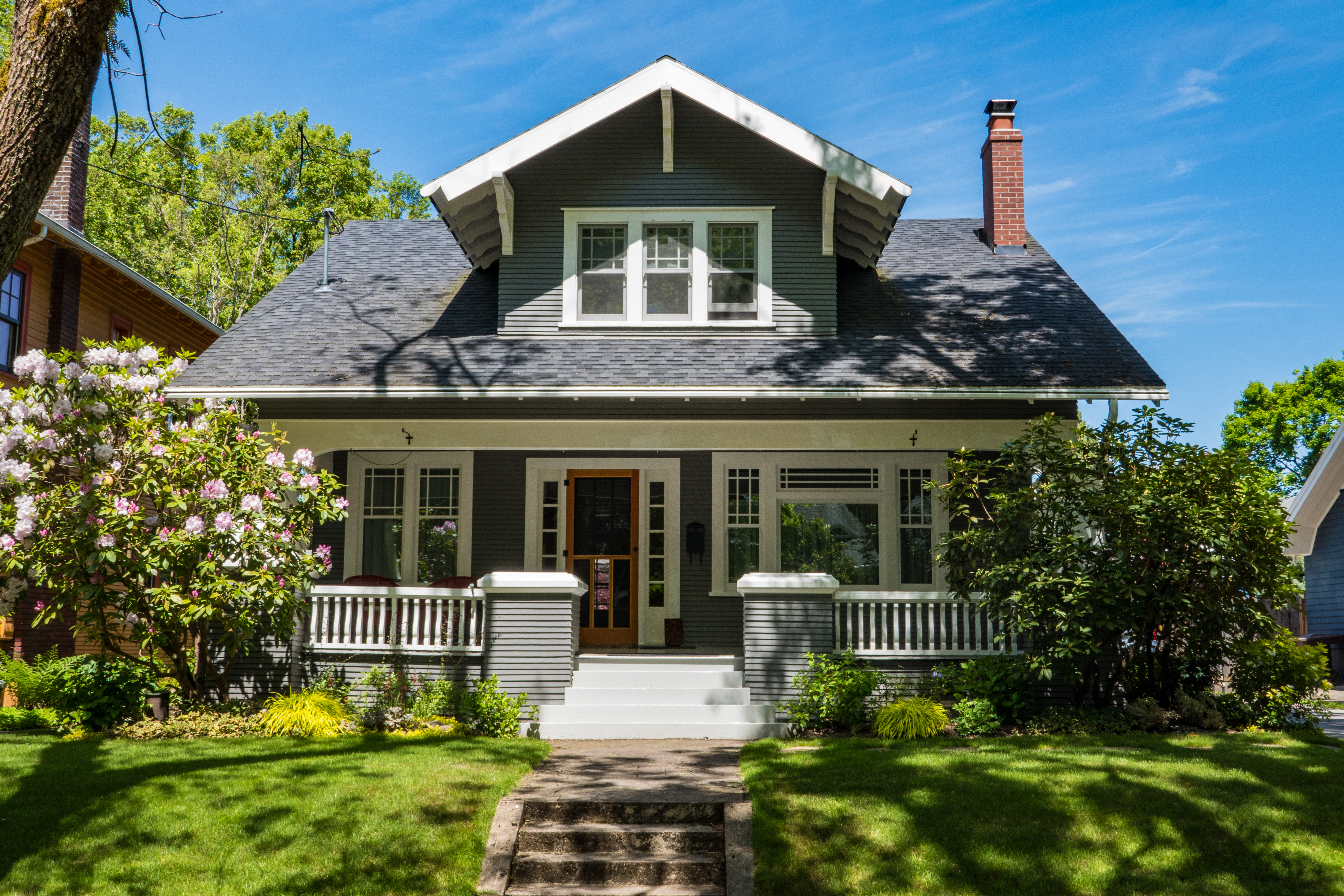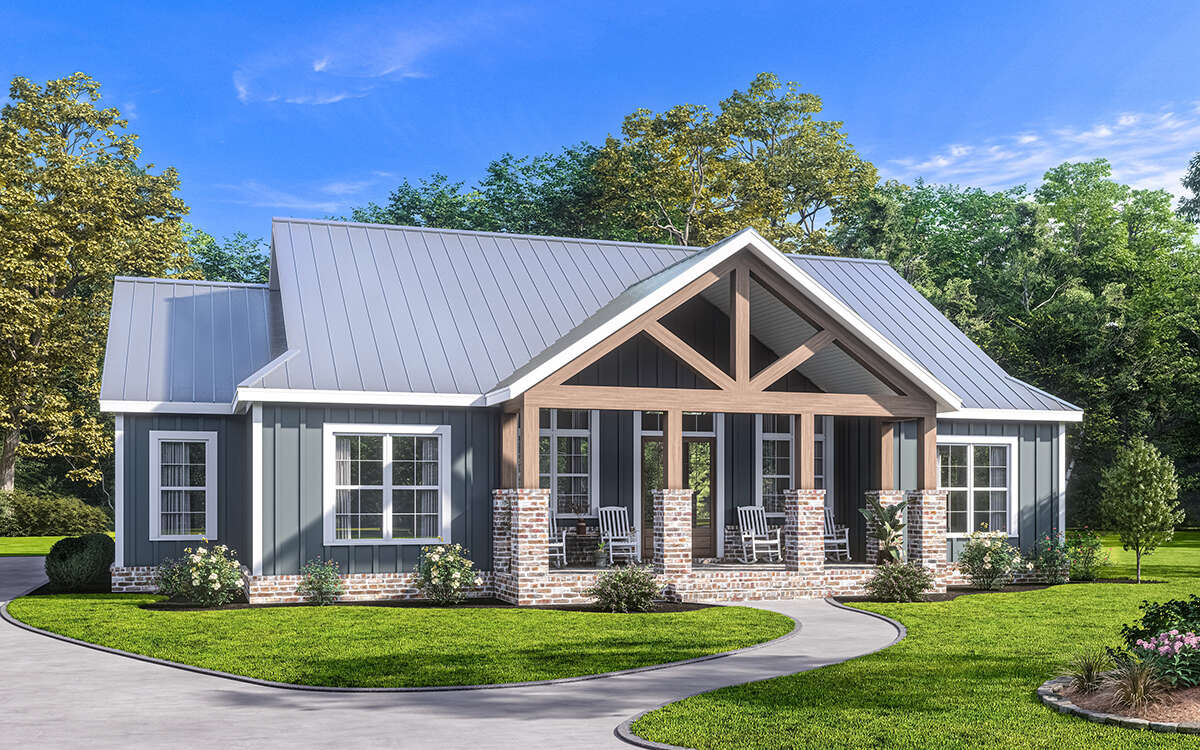How a craftsman style house Combines Style and Functionality
Wiki Article
The Role of Arts & & Crafts Architects in Elevating Architectural Services in Residential Layout
Arts and Crafts architects greatly influence domestic design through their commitment to craftsmanship and sustainability. They prioritize handmade information and all-natural products, which improve both looks and area identity. By involving customers in the design procedure, these architects produce one-of-a-kind space that resonate with individual tastes. This strategy questions concerning the future trajectory of domestic architecture and its prospective effect on area characteristics. craftsman style house. What exists in advance for this ageless style ideology?
The Concepts of Arts and Crafts Architecture
The essence of Arts and Crafts architecture depends on its commitment to workmanship and simpleness. This building motion arised in the late 19th century as a feedback to industrialization, highlighting the worth of handcrafted information and natural products. The concepts of Arts and Crafts architecture focus on capability and consistency with the setting. Frameworks typically include low-pitched roofing systems, wide eaves, and subjected rafters, promoting a sense of unity with nature.Artisans played a considerable function in this style, typically integrating decorative aspects like stained glass, tiles, and woodwork, which reflect neighborhood workmanship. The shade palette often tends to be natural and suppressed, allowing buildings to blend effortlessly right into their environments. In addition, the layout motivates open flooring strategies and communal rooms, fostering a sense of togetherness. Generally, the concepts of Arts and Crafts architecture celebrate the charm of simplicity and the relevance of human link to both nature and area.

Sustainable Practices in Residential Layout
While the need for environmentally accountable living continues to expand, lasting techniques in domestic style have actually acquired considerable grip among architects and homeowners alike. Architects are increasingly incorporating energy-efficient modern technologies and sustainable materials into their styles, intending to lower carbon footprints and enhance power conservation. Approaches such as easy solar style, environment-friendly roofs, and rainwater harvesting systems are becoming basic components of contemporary domestic architecture.The selection of locally sourced products reduces transport discharges and supports local economic climates. Emphasis on natural light and ventilation not only boosts interior air top quality but likewise reduces dependence on fabricated lights and environment control systems. These lasting methods show a commitment to preserving the setting while providing house owners with comfortable, efficient space. As understanding of ecological issues grows, the assimilation of sustainability in household design is positioned to become a specifying characteristic of contemporary architecture, led by the principles developed by Arts and Crafts architects.
Modification and Customization in Home Layout
Modification and personalization in home layout have arised as crucial trends in feedback to the growing wish for one-of-a-kind living atmospheres that show individual tastes and way of lives. Homeowners progressively seek to tailor rooms that reverberate with their individualities, causing a much more purposeful connection with their home. craftsman style house. This movement encourages architects to involve clients in the layout process, cultivating cooperation that assures the last end result symbolizes the property article owner's visionComponents such as bespoke designs, personalized products, and tailored surfaces permit a varied range of expressions in household layout. Arts and Crafts architects play a pivotal role in this development, emphasizing workmanship and top quality. Their concentrate on integrating imaginative components with capability assurances that each home is not just visually pleasing yet additionally distinctly matched to the occupants' needs. Subsequently, this focus on modification enhances the general domestic experience, producing areas that are both individual and enduring.

The Impact of Arts and Crafts Architects on Neighborhood Appearances
As areas advance, the impact of Arts and Crafts architects significantly forms their aesthetic landscape. By stressing handcrafted details, natural materials, and traditional building strategies, these architects develop homes that resonate with their surroundings. Their styles commonly include regional plants, structures, and shades, fostering a feeling of harmony in between developed atmospheres and nature.In addition, the Arts and Crafts motion promotes neighborhood identification via building connection. By encouraging home owners to adopt comparable layout principles, communities establish a natural personality that improves visual appeal. This architectural harmony not just improves the aesthetic experience however likewise instills a feeling of satisfaction amongst residents.
The emphasis on sustainability and craftsmanship in Arts and Crafts architecture aligns with contemporary worths, making these layouts relevant in contemporary settings. Inevitably, Arts and Crafts architects contribute considerably to the total elegance and social stability of communities, leaving an enduring impact on their visual tradition.
read here

Future Trends in Arts and Crafts Architecture
With a raising emphasis on sustainability and customization, future fads in Arts and Crafts architecture are poised to blend typical craftsmanship with modern innovation - craftsman style house. Architects are most likely to focus on green products, making use of redeemed timber and all-natural stone to enhance the sustainability of domestic designs. The integration of smart home technology will certainly come to be commonplace, permitting personalized living experiences without jeopardizing visual honestyThe revival of artisanal methods will promote a restored appreciation for handcrafted aspects, such as bespoke kitchen cabinetry and custom-made floor tile work. Future styles might additionally reflect an emphasis on community-oriented areas, motivating interaction and link among locals. Outdoor living locations will certainly gain importance, their explanation seamlessly integrating nature into the home atmosphere. As Arts and Crafts architecture advances, it will proceed to recognize its roots while adjusting to contemporary requirements, producing unified spaces that show individual worths and way of livings.
Often Asked Concerns
What Influenced the Arts and Crafts Activity in Architecture?
The Arts and Crafts movement in architecture was motivated by a response against industrialization, emphasizing handmade top quality, all-natural products, and a return to typical craftsmanship, intending to develop harmonious, useful spaces that celebrated creativity and uniqueness.How Do Arts and Crafts Architects Collaborate With Customers?
Arts and crafts architects team up with clients through open discussion, prioritizing individual demands and visual appeals. They emphasize workmanship and sustainability, fostering a partnership that incorporates the client's vision with the engineer's proficiency in design and materials.What Products Are Frequently Utilized in Arts and Crafts Residences?
Usual products in Arts and Crafts homes consist of natural timber, stone, and brick, highlighting workmanship and natural aesthetics. These components develop a cozy, inviting ambience, showing the movement's dedication to quality and simpleness in style.Just how Do Arts and Crafts Designs Enhance Indoor Living Rooms?
Arts and Crafts designs enhance indoor home by advertising all-natural light, open layout, and handcrafted details. These elements cultivate a cozy, welcoming atmosphere, motivating a connection in between locals and their atmospheres with thoughtful, useful aesthetics.What Are Some Famous Examples of Arts and Crafts Architecture?
Famous instances of Arts and Crafts architecture include the Gamble Residence, Greene and Greene's work of art in The golden state, and the Robie Residence by Frank Lloyd Wright. These structures showcase handcrafted details and consistency with nature, defining the motion's significance.Report this wiki page